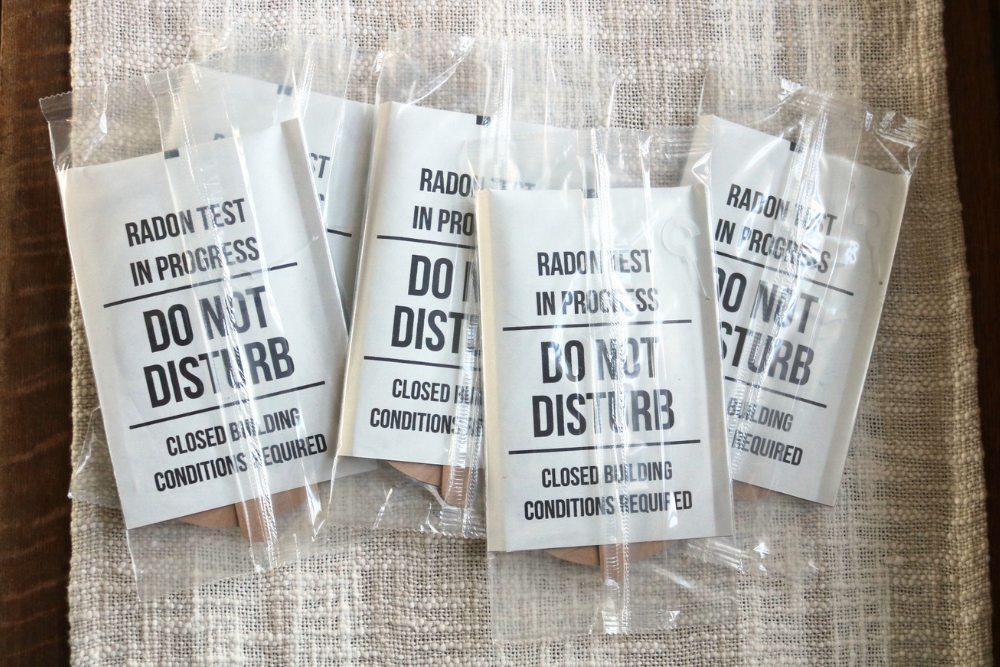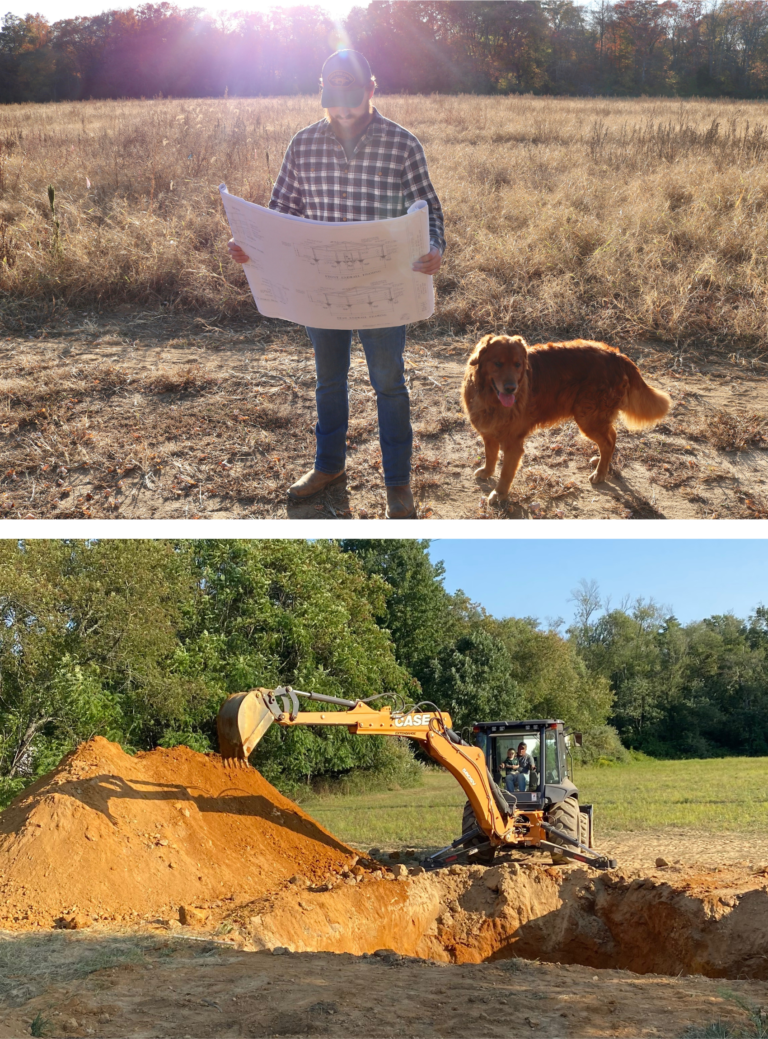The Dangers of Radon: How to Protect Your Home and Health
This post may contain affiliate links. Please read our disclosure policy
January is national radon action month, and most people have never heard about radon before.
I have been a certified radon inspector for the last 4 years and wish more people knew about radon. Radon is known as the silent killer for a reason. What makes radon so dangerous? If you are in a building for more than 8 hours a day you might want to read more about how radon can affect you.

What Is Radon?
Radon is a naturally occurring, radioactive, colorless, odorless, and tasteless gas. The breakdown of uranium, found underground in rock and soil, creates Radon. It is ever present in our environment, even outdoors, but it can penetrate porous building materials and become trapped inside our homes, schools, offices, etc.
Radon levels vary in concentration from region to region and even from neighbor to neighbor. The amount of radon present changes based upon soil composition, topography, source, weather, seasonality, and building characteristics. Radon is most commonly found on the lowest livable level of a building, since the source of radon is typically from the ground.
The EPA released a map of the United States to identify potential areas with a predicted risk to radon.

What Are the Dangers of Radon?
High radon levels are related to an increase lung cancer risk. Overall, Radon is the second leading cause of lung cancer but the number one cause of lung cancer among non-smokers. Scientists are more certain about the link between radon and cancer than any other cancer-causing substance.
When we breathe in high concentrations of radon gas, our bodies absorb radon, and the radon decay products stick to our lung tissue.
Time for a chemistry lesson. Radon is a radioactive gas that is created from the decay of uranium. Radon has a half-life of 3.8 days, which is how long it takes to decay by 1/2. RDP (radon decay products) result from this process and is more of a danger than radon itself. RDP emit alpha and beta particles and gamma rays during the decay process. This emission of energy, or radiation, can damage lung tissue and lead to the development of lung cancer over the course of a lifetime.
Not everyone exposed to elevated radon levels will develop lung cancer. A person who smokes and lives in a home with high radon levels is 25 times more likely to develop lung cancer.
How Long Does It Take to Feel the Health Effects?
The health effects of radon exposure do not happen instantly. It can take several years or even decades of high radon levels before there are noticeable health effects.
How Can I Tell If My Home Has Radon?
Since radon is colorless, odorless, and tasteless, the only way to know if you have radon is to test for it.

A short-term test is a 48-96 hour test that is typically used in real estate transactions and provides a snapshot of the radon in the home at that time.
You can order a short-term radon test yourself for a fairly affordable price.
A long-term test is a 91-365 day test that more closely evaluates the annual year-round average radon concentrations.
You can order a long-term radon monitor for yourself.
Radon levels in a home are not constant. The concentrations fluctuate with the seasons, weather and, even with building characteristics. Building characteristics that affect radon are the pressure and ventilation. If the air pressure of a house is lower than the surrounding soil (which is usually the case), the house will act as a vacuum, and suck radon gas inside the building with no escape. Each unique building characteristic explains why a neighbor might have high radon levels and the other does not.
Myth: My home is new and doesn’t have a basement, so I don’t have radon
Radon exists not only in old homes with basements but also in any building, including schools, businesses, office buildings, new homes, and homes with no basement, a crawlspace, or slabs on grade.
Even if you had your home tested for radon in the past, you should complete radon testing again if:
- It was more than 5 years ago
- If a new addition was added or significant changes to the slab or foundation. For example, cracks or penetrations that occur due to natural settling, water proofing or groundwater control efforts,
- Or earthquakes occur nearby
What Do Radon Levels Mean?
Radon is measured in picoCuries per liter of air (pCi/L)
Outdoor radon levels are typically found at 0.5pCi/L
1.0 pCi/L is the equivalent of smoking 2.5 cigarettes a day
2.0 pCi/L is the equivalent of smoking 4 cigarettes a day
The World Health Organization recommends reducing radon levels if they are 2.7pCi/L or higher
The Environmental Protection Agency recommends reducing radon levels if they are 4.0 pCi/L or higher.
A radon level of 4 pCi/L is the equivalent of smoking 8 cigarettes per day, or 200 chest x-rays a year
A radon level of 10 pCi/L is the equivalent of smoking a pack of cigarettes per day.
As radon levels increase, your risk also rises. However, you can avoid the health effects of radon by testing for it and then lowering the radon levels.
Conclusion
You might be reading this and think “omg I need to get our home tested!” or “I wonder why I haven’t heard about radon before?” or “why wasn’t our home tested when we bought or built our home?”
That’s why I wrote this post! My day job revolves around radon in commercial real estate deals and adhering to ANSI/AARST regulations and each state’s regulations.
If you are looking to dive deeper into environmental factors to consider when buying your next home or finding land check out this post: 8 Environmental Research Tools Your Realtor Won’t Tell You
-
Your Realtor Won’t Tell You This- 8 Environmental Research Tools
Doing environmental research or due diligence before you purchase your home or land is your responsibility.
You can purchase a short-term test kit from AirChek.com or order a long-term monitor from Amazon.com
You might not have heard about radon when you bought your house because it might not have been a requirement at the time.
States that require sellers to disclose any known radon levels or testing results during a home sale:
- Alaska
- Arizona
- Delaware
- Florida
- Illinois
- Kansas
- Maryland
- Maine
- Michigan
- Minnesota
- Montana
- North Carolina
- New Hampshire
- New York
- Ohio
- Oregon
- Pennsylvania
- Rhode Island
- South Carolina
- South Dakota
- Tennessee
- Texas
- Washington
- Wisconsin
If you are building a home or found high levels of radon during testing, our future blog post explains a way to reduce indoor radon levels through mitigation and radon resistant construction ideas.






One Comment